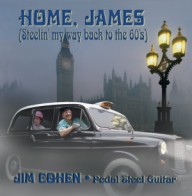Hello fellow players,
In a recent newsletter I made a reference to a great old builder and player. His name was Zane Beck. I called him Zane King in the letter because the great steel player Zane King’s mother was in the store when I was writing the newsletter so I had Zane King on my mind. Several of you spotted this error and lovingly jumped me over it. Both Zane King and Zane Beck were and are incredible players. The world of steel guitar is lucky to have known them both.
I have been harping for about fifteen years about what a wonderful musician Steve Wariner is. I will continue to do so, however it looks like many of you are learning this on your own. About 18 years ago, I sold Steve one of my personal Emmons PP single neck steel guitars. He went on to learn it and learn it very well. He is one of those strange guys that is a very, very nice person along with being a megastar and a tiptop musician on top of it all.
I am very glad to have had a part in getting his career started.
Barbara Mandrell called me one day and said, “I have a singer friend that needs a demo that we can pitch to a major label.” She asked me if I would be interested in playing steel on it.
I said, “It depends on who it is. Tell me who the artist is and I might be able to find time to do it.”
She said, “It’s Steve Wariner and he requested you.”
I said, “I would be very glad to do it then.”
I had worked with Steve Wariner in the Bob Luman band in the old days and Steve played bass so I was well aware of Steve’s talents. I wasn’t extremely sure about his singing at first, however it’s obvious that I should never have had any doubts. He’s an astounding singer and can sing many styles and this guy has a sense of humor that is only surpassed by Roger Miller.
When the demo was finished I had another session I had to run to so I didn’t really get to hear the finished product, but Barbara called me back that evening and said it was astounding.
So I said, “Leave me a copy of it at the studio and I’ll drop it off to Chet Atkins as I feel he would be very interested in Steve’s style and I want Chet to hear him play guitar.” Steve’s guitar playing is beyond belief. Anyway, as all of you know, Chet signed him to a deal with RCA Victor and the rest is history.
One way to get a vocal career started is to do a beautiful demonstration recording so what I always do when I’m trying to pitch a singer to a label is do a video of them performing their sound demo so that the prospect can be seen and heard and even try to do an interview so that their personality can also be observed.
This way the label heads actually know what they’re getting when I walk in to pitch the person to them. I have pitched several artists that are stars today, but I’m really no longer in that business because it seems like many of the people at the labels today really don’t know what they’re hearing and I totally respect and salute those that do.
The old days of dropping off a cassette recording are pretty well totally over as most label heads don’t even interview the singer themselves, instead have a hundred dollar a week secretary do that for them. A real shame. Thank goodness we had a Chet Atkins around when we finished Steve’s demo recording.
If I’d have known he was going to play steel so well, I may not have done it … haha! But seriously, with the personality that Steve has and as nice a person as he is, this guy deserves everything he has ever gotten in the music business. I certainly hope he gets much more. I just hope he does a lot more of that wonderful singing, guitar playing and less steel guitar playing. He’s the kind of hero we all need.
Over the years I’ve watched several careers blossom that I’ve had a hand in helping start. I’ll mention again on my website, there is a video that I did with Steve at the East Tennessee Steel Guitar show fifteen years ago. We did Rocky Top and Don’t You Ever Get Tired Of Hurting Me.
These videos were shot with a handheld camera back before videos had progressed to the point and quality that they are today. However, watching Steve’s impromptu act on both these songs is a fun thing I’m sure will tickle most of you.
Here’s the link: www.steelguitar.net/clips.html
Check out our monthly specials at http://www.steelguitar.net/monthlyspecials.html and we’ll try to save you a lot of money.
Your buddy,
Bobbe
www.steelguitar.net
sales@steelguitar.net
www.youtube.com/bobbeseymour
www.myspace.com/bobbeseymour
Steel Guitar Nashville
123 Mid Town Court
Hendersonville, TN. 37075
(615) 822-5555
Open 9AM – 4PM Monday – Friday
Closed Saturday and Sunday
 Jim Cohen is best known for his western swing band, Beats Walkin’, but Jim is a multi-faceted artist. In 2008 he released a tribute album of ’60s pop tunes arranged as pedal steel instrumentals. Entitled Home, James, this excellent set of tunes helps us imagine the E9th pedal steel in another context, recognizable yet far from its country & western roots.
Jim Cohen is best known for his western swing band, Beats Walkin’, but Jim is a multi-faceted artist. In 2008 he released a tribute album of ’60s pop tunes arranged as pedal steel instrumentals. Entitled Home, James, this excellent set of tunes helps us imagine the E9th pedal steel in another context, recognizable yet far from its country & western roots. Featured Products
Featured Products